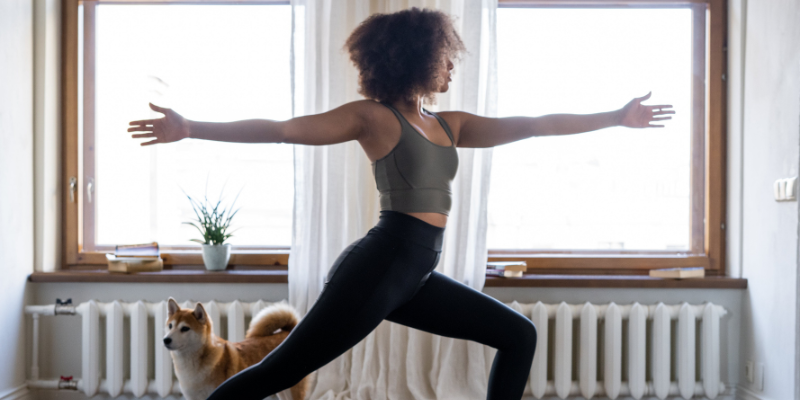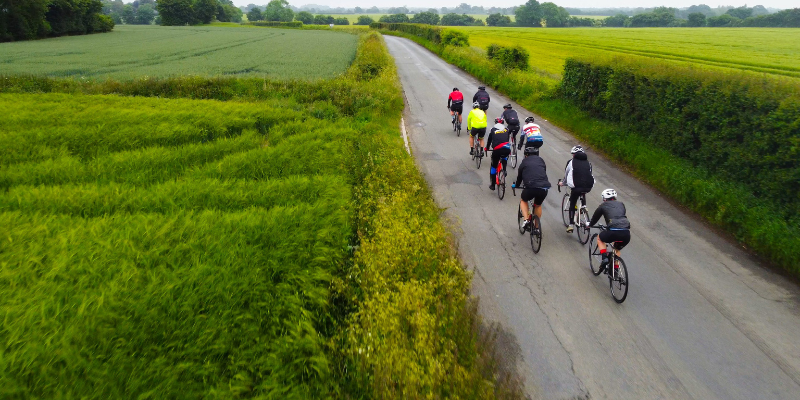Finding Balance and Building Resilience for a Happier, Healthier Life
Most of us are working hard to achieve balance in our lives—and what balance means to each of us can be very personal. When I think about achieving balance looks like in my life, I think about my yoga practice—which is almost 1 year old.
Finding Balance Through Building Resilience
I’m built a little like a fire hydrant and never been one much for stretching. Only on rare occasions would I even think about it before or after exercise. My biggest stretch in the morning is reaching for my cup of coffee, and for the most part, I never thought I needed to unbend myself, and certainly never on a regular basis. As a result, little by little, my muscles became less flexible and achier—limiting my range of motion. This past year, I dedicated myself to taking yin or restorative yoga classes. There were a few surprises along the way.
These classes support poses using blocks, bolsters, straps, and blankets and hold the posture longer. This allows you to sink into the position and slowly release the tension. Because the positions are supported, you must eventually trust that as you let go of the tension and rest in the release and support.
Resilience is not just about surviving; it is about thriving and flourishing amidst uncertainty.
It wasn’t until I began trying this that I realized how tense my muscles were. I’d begin class sitting on a block, and the instructor would invite us to try to put our shoulders in our back pockets. I’d spend all day listening to my shoulders.
I didn’t realize they were on full alert all day long until I tried to sit on a block, cross my legs, stretch my spine, and release them. Trying to let them relax during class, I became aware they were spring-loaded. They’d come down a bit, then snap back into their normally tense position. I swear, sometimes I could almost hear a “boing.”
Then there was the breathing part. Oy. Trying to coordinate the breathing with the release and support was like trying to write two different letters to different people with both hands at the same time. The biggest thing I became aware of was how much tension I held—and how unaware I was of my body, breathing, and mind.
The biggest thing I became aware of was how much tension I held—and how unaware I was of my body, breathing, and mind.
After a few months, I took a regular yoga class. This wasn’t because I was making great strides in learning about stretching but because I wanted to see the difference. By now, I knew the instructors and many people in the classes but was not fully prepared for the types of movements and positions suggested.
About halfway through the class, the instructor asked us to balance on our right foot, lift the left foot behind us, and wrap the belt on the top part of our foot. Then, with our left hand holding onto the strap over our shoulder, slowly pull our left foot up our back to stretch it—all the while balancing on the right foot.
My classmates knew this move and easily began to move their left foot up behind them gently. I, on the other hand, burst out laughing. Fire hydrants are rarely this limber. But I stuck with the class and afterward apologized to the instructor for my outburst. She was very gracious and reminded me it was the effort and willingness to try, is where the value is. This was something I’d forgotten.
Like our body, our mind needs to be stretched to stay flexible.
In a world that is constantly changing, resilience becomes a crucial trait for success. It is the ability to adapt to new circumstances, bounce back from setbacks, and thrive in the face of challenges. Resilience is not just about surviving; it is about thriving and flourishing amidst uncertainty.
However, resilience is not something we are born with; it is a skill that can be developed and strengthened. It involves cultivating a positive mindset, building strong relationships, and adopting healthy coping mechanisms. By developing resilience, we can face challenges head-on, learn from our failures, and come out stronger on the other side. Resilience is a little like a yoga class.
A flexibility mindset goes hand in hand with resilience.
It is the ability to adapt to new situations, think creatively, and embrace change. A flexible mindset allows us to see opportunities where others see obstacles and to find innovative solutions to problems.
A rigid mindset—like my tense and achy muscles, can hinder our progress and limit our potential. By embracing a flexibility mindset, we open ourselves up to new possibilities and opportunities. We become more adaptable, open-minded, and willing to step out of our comfort zones.
A rigid mindset is like a rigid muscle
Dr. George Bonanno, a leading expert in the field of resilience, has conducted extensive research on how individuals cope with traumatic events and navigate through change. His findings reveal that resilience is not a rare quality possessed by a select few; rather, it is a common trait that can be developed and strengthened.
Bonanno's research shows that individuals who are resilient in the face of adversity have certain characteristics in common. They have a positive outlook, a strong support system, and the ability to regulate their emotions effectively. Moreover, they view change as an opportunity for growth and personal development.
Cultivating a flexibility mindset requires conscious effort and practice—just like yoga. Here are some actionable steps and exercises to develop a flexibility mindset for personal and professional success:
Steps to Build a Flexibility Mindset
1. Embrace uncertainty.
Instead of fearing the unknown, embrace it as an opportunity for growth and learning. Embrace change as a chance to explore new possibilities and expand your horizons.
2. Practice mindfulness.
Mindfulness is the practice of being fully present in the moment. It helps us stay grounded and focused, even in the face of change and uncertainty. Incorporate mindfulness exercises into your daily routine to cultivate a flexible mindset.
3. Challenge your beliefs.
Our beliefs shape our thoughts and actions. Challenge any rigid beliefs or assumptions that may be limiting your ability to embrace change. Be open to new perspectives and ideas.
4. Seek new experiences.
Stepping out of your comfort zone and trying new things can help you develop a flexibility mindset. Take on new projects, learn new skills, and explore different areas of interest.
5. Build a support network
Surround yourself with people who support and encourage your growth. Seek mentors and colleagues with a flexible mindset and learn from their experiences.
I am coming up on completing my first year of yoga. I no longer hear my shoulder “boing” back up to my ears, and I realize how much less achy, and more flexible I’ve become. While I still struggle to hold my left foot behind me with a strap, I have somehow learned to enjoy the challenge of finding balance.



